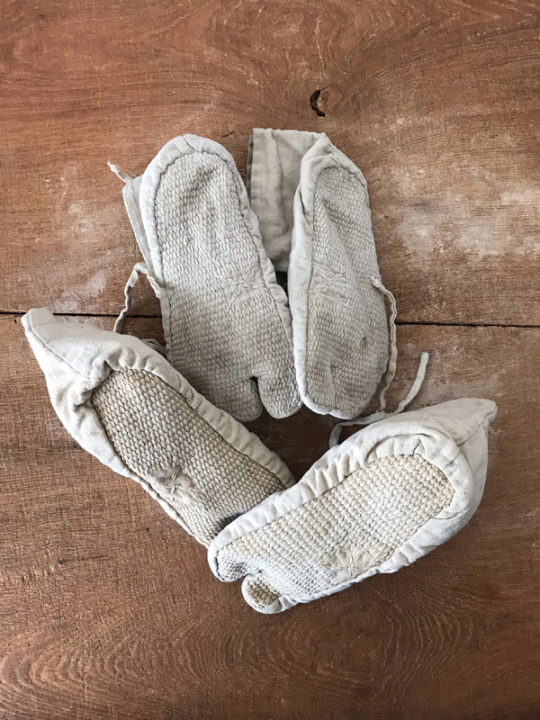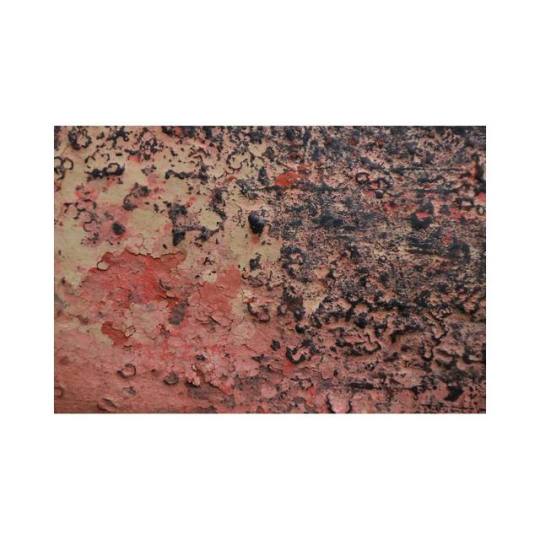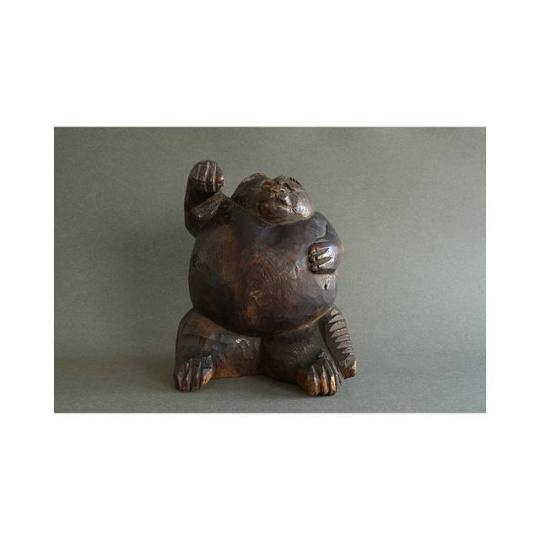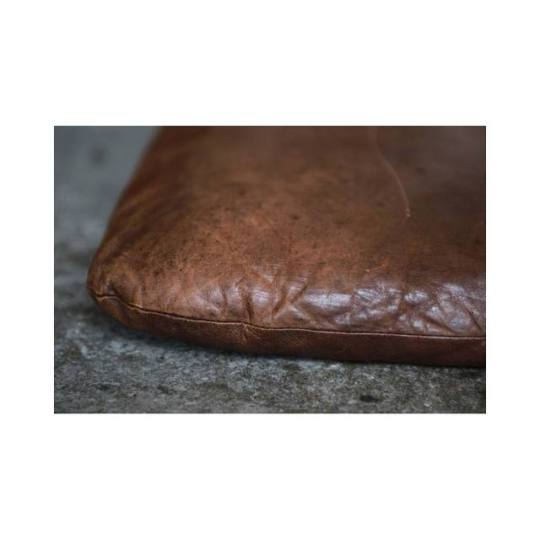#Taisho - Showa period 20th century
Text

Nude with Black Cat
Takahashi Shotei (Hiroaki, 1871-1945)
Taisho - Showa period, 20th century
ca. 1924-27
Sothebys
#Takahashi Shotei (Hiroaki 1871-1945)#art#artist#painting#woodblock print#Nude with Black Cat#Taisho - Showa period 20th century#ca. 1924-27#Sothebys
89 notes
·
View notes
Photo

Japanese tabi with full sashiko from Tohoku region, Taisho – Early Showa period, 20th century
3 notes
·
View notes
Photo


A BRONZE SCULPTURE OF EELS TAISHO-SHOWA PERIOD (20TH CENTURY), SIGNED SHIHO SAKU (WATANABE SHIHO; 1896-?)
27 notes
·
View notes
Photo

Today SAVE 9% on everything w/ code “TAKE9” / Modern Japanese Posters - Design Collection 3 / Posters were introduced to Japan from Europe toward the end of the Meiji period, along with printing techniques and design concepts from which their modern-day counterparts evolved. This convenient, pocket-sized collection presents more than 200 posters ranging in style from examples reminiscent of ukiyo-e “bijin-ga,” featuring beautiful women, to colorful contemporary designs produced during the Taisho and early Showa periods, a time when visual design flourished in Japan. Compiled from the collection of the Museum and Archives at the Kyoto Institute of Technology Design, this volume a fascinating look at the variety and scope of Japanese posters through the 20th century. Published by Seigensha, 2018 / Bilingual, with Japanese and English captions #graphicdesign #posterdesign #ModernJapanesePosters #design #japan https://www.instagram.com/p/BtGWphngmOG/?utm_source=ig_tumblr_share&igshid=vdeewi0xeiun
3 notes
·
View notes
Photo

Hasui Kawase 川瀬巴水
Shin Hanga (新版画 new block print) is the title given to work by the new wave of ukiyo-e artists that emerged during the 20th century. During this time (the Taisho and Showa periods) a fresh generation of artists came to the forefront of the arts scene inspired in equal parts by the nation’s rich legacy especially during the Edo and Meiji periods and the bourgeoning accessibility of the outside world.
0 notes
Text
About What a Ukiyoe Reproduction is ②
In "ある浮世絵師の遺産" (1978)written by Takako Takamizawa, there is a mention as the following , which is about the memorandum Kafu Nagai, one of the supporting hospitals, sent to the Ukiyo-e Preservation Publishing Association in 1920.
"Kafu emphasizes that most of the good ukiyo-e prints have leaked overseas, and the ones that remain in Japan are too expensive to be viewed by the general public, and the study of reproduction is as urgent as the reprinting of ancient documents in the study of Japanese literary arts.Moreover, he lamentes that the existing reproductions are often inferior for commercial profits and misleading the true value of ukiyo-e, and recommends the reproduction of Enji Takamizawa with the following words.~"
There is probably not systematic researching on the history of the reproduction, so in order to know its history and aspect, it is necessary to collect and judge fragmentary literature materials of each era.But,the following can be said from the references in the above literature. "At the beginning of its history, ukiyoe reproductions were generally just crude for profit or counterfeit for fraud, but from the beginning of the 20th century, the reproduction also began to be made with the consciousness of making works of art as a way to spread the artistry of the rare ukiyo-e prints."
The following are the general views about reproducing I have heard from three of the publishers that are publishing the reproductions at present.
"Ukiyoe reproduction is work of art at moderntime, and its purpose is different from that of the Edo period (many of which were sold at low prices in rough quality)."
"Many of the originals printed in the Edo period are rough and dirty in the quality. In addition, there are kinds of reproduction of each of the Meiji, Taisho, Showa, and Heisei eras, and that's what reproduction is."
"Ukiyo-e prints in the Edo period were printed by printers in the Edo Period, and it is natural that they get difference with ingenuity and sense if another printer in another era prints them."
In 「いま、北斎が甦る」(1987)written by TBS文化情報部編・定村忠士, there is a reference to the production policy when the work is newly printed using Hokusai's original woodblocks from the Museum of Fine Arts, Boston, at the end of the Showa era.Making a print in posterity by using the original woodblocks from the Edo period is different from the meaning of "ukiyoe reproducing", and it's a little old story about 30 years ago, but the production policy will be very helpful in understanding the current concept of ukiyoe reproducing.
"For printing the Hokusai picture this time, the first edition published in the Hokusai era that is 180 years ago was used as a sample. Thats is of course. But we were wondering what to do with the paints that produce color, and whether we could prepare the exact same paints as 180 years ago.~(omission).The policy for printing Hokusai pictures was to make them as close as possible to the first edition , and at the same time, to color them with a modern feel 180 years later at present.Both the publisher and the printer are human beings and craftsmen who live in the Present Age , and the heart and skill of a living printer is printed into each ukiyo-e.
If so, it must be said that it is an inevitable conclusion to make use of the modern sense."
These views appear to be now commonplace among the reproduction workers. (And in my opinion, I don't think these views are strange at all, but rather that it is enough pride . However, I think it's definitely strange the current situation seen in the traditional woodblockprint making society , that what is made in those way is said and put out in the world as if it were "a reproduction of the ukiyo-e of the time made with the same materials and techniques as in the Edo period",as promotion. )
Continued to ③
0 notes
Photo


Silk Kimono. Early Showa Period (1927-1940), Japan. The Kimono Gallery. A black and white chirimen silk kimono featuring stenciled abstract patterning. This artifact is a reflection of the great art experimentation in Japan occurred during the exuberant and confident Taisho and early Showa periods of the 1912-1940 period. This dazzling kimono reflects the influence on Japanese art from Europe and North America during this period. The influence that Japan had on the development of Art Nouveau and art Deco in the West is profound, but there has been little research on the cross-pollination of art influences between the Japanese and the West during several decades preceding WWII. A lot of extant kimonos from this pre-WWII period - especially meisen silk ones - sport clearly Western-influenced 20th century art styles. However, is the art on kimonos like this example only influenced by the West, or is their more art breakthroughs in Japan during this period than has been researched and documented?
59 notes
·
View notes
Photo

Japanese lacquerer’s large basin 28in (Dealer: Sezuan antiques & art) – Extremely big and rare matured remains of Aizu-lacquerer’s equipment coated in many rich layers of drippings of everyday’s red and black abstractions. Taisho – Early Showa period in early 20th century. Never used such equipment for lacquering today and hardly found such lacquer tool now and in the future ever. approx. D 72.0-70.5cm (28.34-27.75in), H 17.5-17.0cm (6.88-6.69in) http://tatami-antiques.com/items/large-lacquer-basin/ #tatamiantiques #japaneseantiques #sezuanantiquesandart #lacquer #abstract #mingei #tool
2 notes
·
View notes
Photo

Japanese koyori paper string bag (Dealer: tayutafu) – Made of ‘koyori’ (string made from twisted Japanese ‘washi’ paper). Taisho-Showa period, 20th century. Fine and elegant make. Lovely and solid. approx. H 18cm (7.08in), W 21cm (8.26in), D 7cm (2.75in) http://tatami-antiques.com/items/koyori-bag/ #tatamiantiques #japaneseantiques #tayutafu #basket #bag #koyori #paper #mingei #object
1 note
·
View note
Photo

SUPER-MANEKI-NEKO – Wood carving so lucky cat okimono (Dealer: Jinta) – ‘Maneki-neko’ as the traditional Japanese figurine (as lucky charm, talisman) which is often believed to bring good luck to the owner, specially for thriving business as raising right paw like this cat is meant to be good fortune for money. Fatty and deluxe cat like “Big poppa”. So, must be expected to beckon enormous wealth?! Usually made of ceramic or plastic in modern time, but it’s a wood carving ‘super beckoning cat’ as unusual type. Taisho-Showa period, 20th century. Crack at the right hand and with the mark of repair as seen. approx. H 24cm (9.44in), W 20cm (7.87in), D 15cm (5.90in) http://tatami-antiques.com/items/super-maneki-neko/ #tatamiantiques #manekineko #okimono #woodcarving #jinta #bigpoppa #fatty #cat #japaneseantiques
13 notes
·
View notes
Photo

Japanese lacquerer’s stand (Dealer: tayutafu) – Lacquer worker’s tool of wooden stand coated in the everyday’s abstractions of unexpectation. Impressive landscape. Taisho-Showa period, early 20th century. approx. 67 x 26cm (26.37 x 10.23in), H 32cm (12.59in) http://tatami-antiques.com/items/lacquerers-stand/ #tatamiantiques #japaneseantiques #tayutafu #lacquer #stand #tool #mingei #folkart #texture #abstract
13 notes
·
View notes
Photo

SUPER-MANEKI-NEKO – Wood carving so lucky cat okimono (Dealer: Jinta) – ‘Maneki-neko’ as the traditional Japanese figurine (as lucky charm, talisman) which is often believed to bring good luck to the owner, specially for thriving business as raising right paw like this cat is meant to be good fortune for money. Fatty and deluxe cat like “Big poppa”. So, must be expected to beckon enormous wealth?! Usually made of ceramic or plastic in modern time, but it’s a wood carving ‘super beckoning cat’ as unusual type. Taisho-Showa period, 20th century. Crack at the right hand and with the mark of repair as seen. approx. H 24cm (9.44in), W 20cm (7.87in), D 15cm (5.90in) http://tatami-antiques.com/items/super-maneki-neko/ #tatamiantiques #manekineko #okimono #woodcarving #jinta #bigpoppa #fatty #cat #japaneseantiques
6 notes
·
View notes
Photo

SUPER-MANEKI-NEKO – Wood carving so lucky cat okimono (Dealer: Jinta) – ‘Maneki-neko’ as the traditional Japanese figurine (as lucky charm, talisman) which is often believed to bring good luck to the owner, specially for thriving business as raising right paw like this cat is meant to be good fortune for money. Fatty and deluxe cat like “Big poppa”. So, must be expected to beckon enormous wealth?! Usually made of ceramic or plastic in modern time, but it’s a wood carving ‘super beckoning cat’ as unusual type. Taisho-Showa period, 20th century. Crack at the right hand and with the mark of repair as seen. approx. H 24cm (9.44in), W 20cm (7.87in), D 15cm (5.90in) http://tatami-antiques.com/items/super-maneki-neko/ #tatamiantiques #manekineko #okimono #woodcarving #jinta #bigpoppa #fatty #cat #japaneseantiques
7 notes
·
View notes
Photo

Japanese lacquerer’s stand (Dealer: tayutafu) – Lacquer worker’s tool of wooden stand coated in the everyday’s abstractions of unexpectation. Impressive landscape. Taisho-Showa period, early 20th century. approx. 67 x 26cm (26.37 x 10.23in), H 32cm (12.59in) http://tatami-antiques.com/items/lacquerers-stand/ #tatamiantiques #japaneseantiques #tayutafu #lacquer #stand #tool #mingei #folkart #texture #abstract
3 notes
·
View notes
Photo

ZABUTON – Japanese leather floor cushion 1 pc. (Dealer: tayutafu) – Rare aged leather floor cushion made of goat skin. Taisho-Showa period, early 20th century. Actually used by only the wealthy class in Japan at that time. In fine used condition as is. One piece as not a one pair. approx. 58 x 50cm (22.83 x 19.68in), T 6.5cm (2.55in) http://tatami-antiques.com/items/leather-zabuton/ #tatamiantiques #japaneseantiques #tayutafu #leather #cushion #mingei #folkart #texture #deco
3 notes
·
View notes
Photo

Jet black washbasins (Dealer: Jinta) – Japanese black-lacquered wood wash basins of beautiful proportions. Taisho-Showa period, early 20th century. Quite a fascinating mat black, and very rare type of lacquer ware as such a wash basin type, as that’s the first encounter in my experience just like you. Total 3 pieces as $130 each. approx. D 25cm (9.84in), H 9cm (3.54in) http://tatami-antiques.com/items/black-basins/ #tatamiantiques #lacquer #basin #jetblack #proportions #jinta #mingei #folkart #japaneseantiques
2 notes
·
View notes